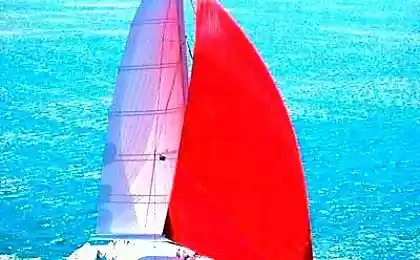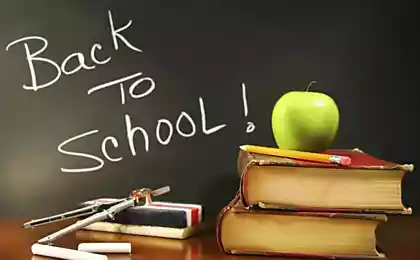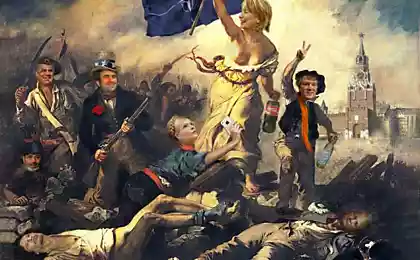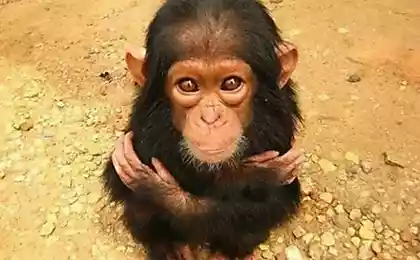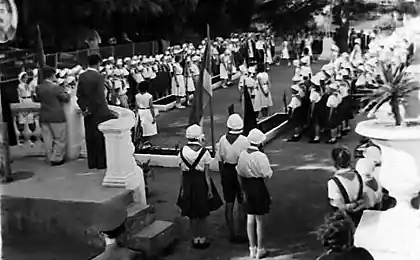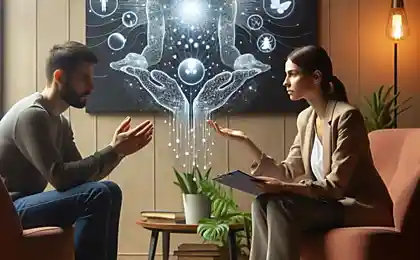875
60 years have brought sweeping revolutionary ideas
60 years have brought sweeping revolutionary ideas not only in society but also in architecture. An amazing example of a non-komformizma filed then the Brits sixties from the group "Archigram» (Archigram).
Projects have a great variety. Pictures are placed here only two. Something in all this is the cosmic (and comic), from flying to the moon or to Mars.
Both projects - "Live Cocoon" and "Walking City" - based on a paradox D. Green and M. Webb (participants "Archigram"): psychological dependence of man in the stationary housing is gradually reduced. So the house will soon become a device (Personal mobility capsule) that a person carries with him. And the city - in these devices, included in it. In general prinitsipialnoy difference between housing and clothing not, except in size. Clothes - it oblochka for one person (body weight), and the house - a number of people and processes in which these people are involved. Both shells protect from weather and hide from prying eyes, they do not need to see.
Bulky in familiar tools for living life can be reduced through the establishment of microdevices, "disappearing things" such as inflatable furniture, a special way of compact packaging are not currently used items. Various processes can occur in a transformable space (inflatable floor, if necessary, turns into chairs, beds, and so on. D.)
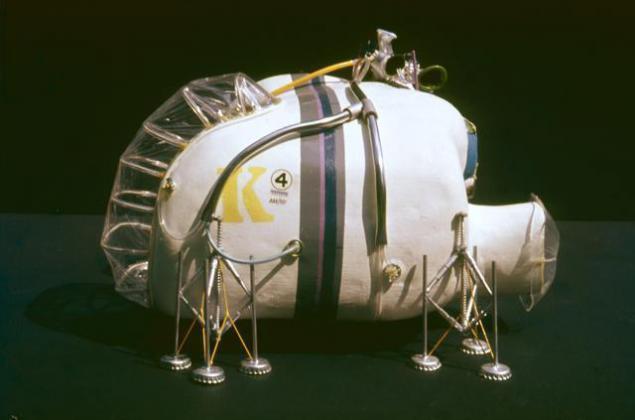
Housing in the future, wrote Webb and Green in «Architectural Design» in 1966, will not disappear and will not decrease. It will be a mobile, changing in size, it oblochki stnut not only soft, but elastic, flexible, mobile, the concept car, housing and clothing merge. The coat can become a house and a car, even if it is provided with a motor!
The meaning of "Residential cocoon» (Living Pod, a project by David Green, 1966), as well as many other projects "Archigram" - in a flexible oblochke, it's such a two-story, similar to the egg capsules on the four mobile samovyravnivayuschizsya pillars, each of which is divided another three legs, that is it has a total of 12 feet.
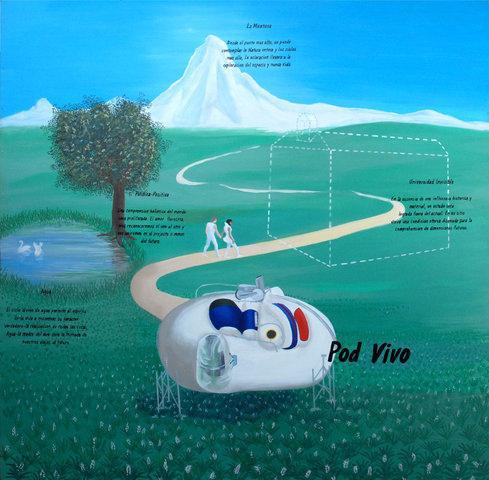
Cocoon can be transported and set in the city as the home or in the country as a summer residence. Cocoon / shell / capsule / trailer can live his own life, and can be incorporated into larger structures of others like him.
External oblochka cocoon consists of three layers: the outer (protective), medium (isolation), internal - direct contact with the occupant of the cocoon. All the medium inside - a flexible, inflatable used partitions, also inflatable floor, depending on the method and the function of inflating different furniture. Internal environment creates a variety of programmable technical devices, including cooking and serving food. There is an artificial climate, not only in terms of air temperature, and the temperature of the inflatable element, with which a person comes into contact. Machines with Electrostatic self-cleaning for all types of washing, followed by removal of waste. Instead of stairs - the lifter automatic. Clever storage of clothes and personal belongings. Also automatically adjusts the height of "legs" of the cocoon and its orientation in space, tightness in relation to the outside world.

That section of the cocoon:

Another cut, visible elements of interior decoration:

"The floor plans." Plan lower level:

Plan top level reminiscent of some biological body in the context of:
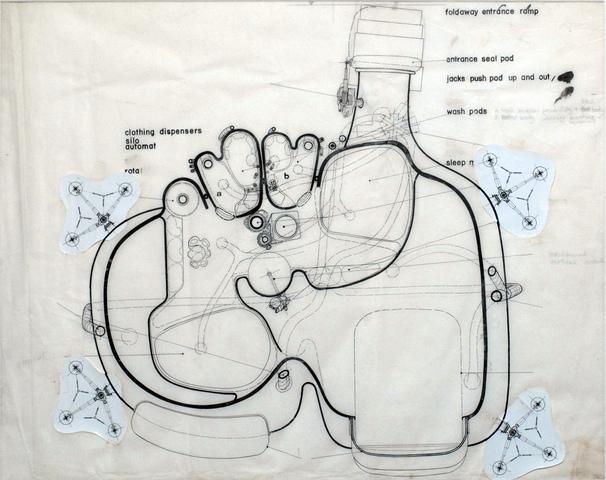
Model cocoon from different sides, belonging to the British flag on board confirmed:
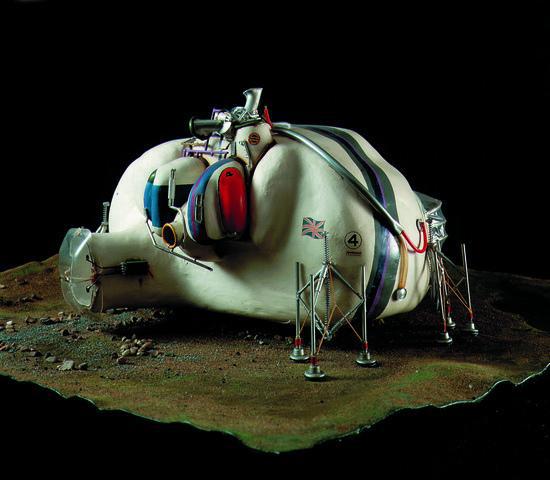
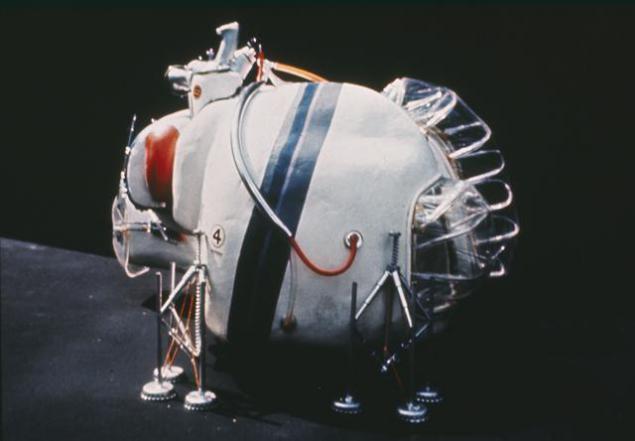
In the cocoon assumed here such "windows" is also flexible:

Interior Model:
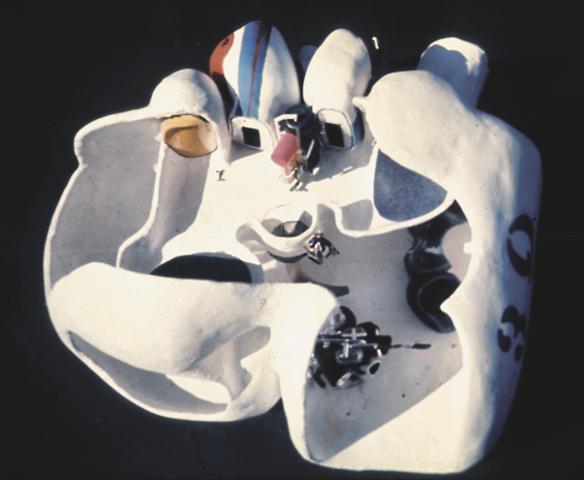
All sorts of different useful valve needed for the life of the cocoon:

Another project - "Walking City» (Walking City, writer - Ron Herron, 1964) does not require special comment here the idea of mobility of property brought to its logical conclusion. Dimensions and plans of walking "vosminozhek" (400 meters long and 220 tall!) Are shown in the image below.
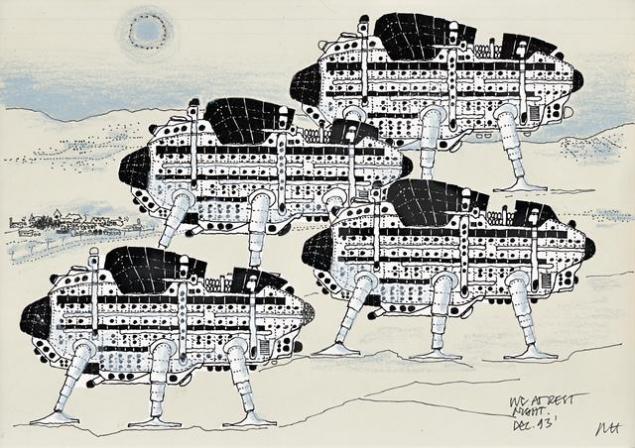
Walking the city are connected to the network (information, utilities), where they will stop at this point (for example in New York. See below). These nomadic structures allow their residents included in different cultures and information flow, to live in a "global information market».
It's only now that we know that access to anywhere in the world here and now do not need a Living Pod, and iPod :-))
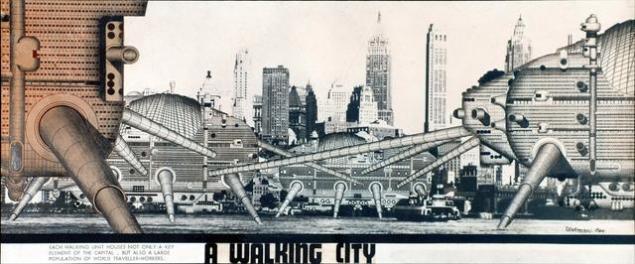
Three sketches with dimensions for special interests:
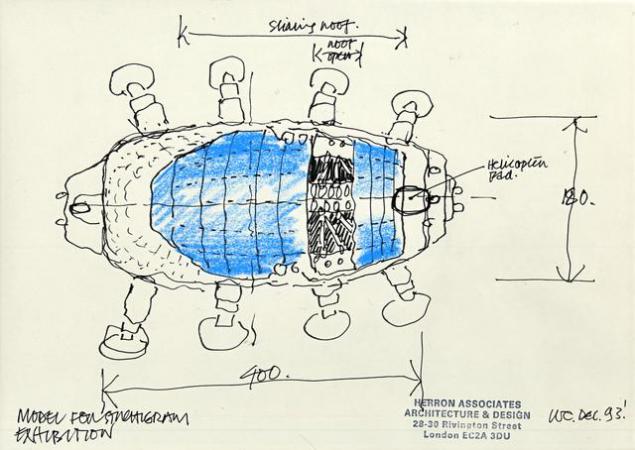
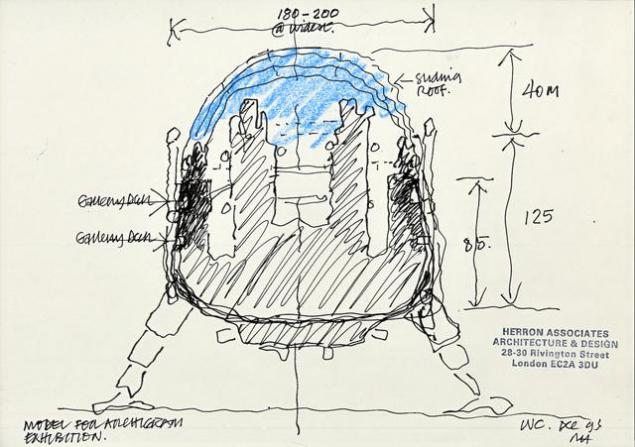
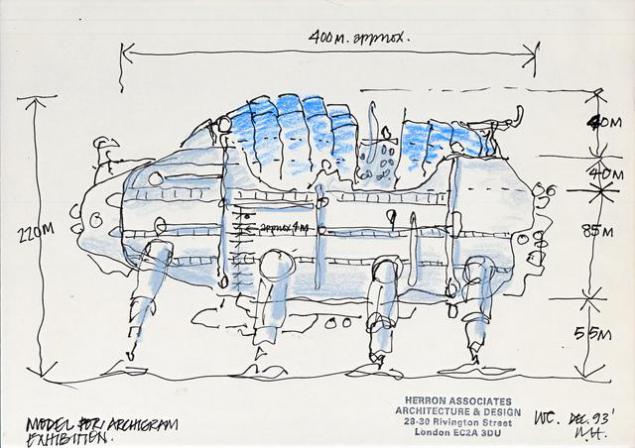
Projects have a great variety. Pictures are placed here only two. Something in all this is the cosmic (and comic), from flying to the moon or to Mars.
Both projects - "Live Cocoon" and "Walking City" - based on a paradox D. Green and M. Webb (participants "Archigram"): psychological dependence of man in the stationary housing is gradually reduced. So the house will soon become a device (Personal mobility capsule) that a person carries with him. And the city - in these devices, included in it. In general prinitsipialnoy difference between housing and clothing not, except in size. Clothes - it oblochka for one person (body weight), and the house - a number of people and processes in which these people are involved. Both shells protect from weather and hide from prying eyes, they do not need to see.
Bulky in familiar tools for living life can be reduced through the establishment of microdevices, "disappearing things" such as inflatable furniture, a special way of compact packaging are not currently used items. Various processes can occur in a transformable space (inflatable floor, if necessary, turns into chairs, beds, and so on. D.)

Housing in the future, wrote Webb and Green in «Architectural Design» in 1966, will not disappear and will not decrease. It will be a mobile, changing in size, it oblochki stnut not only soft, but elastic, flexible, mobile, the concept car, housing and clothing merge. The coat can become a house and a car, even if it is provided with a motor!
The meaning of "Residential cocoon» (Living Pod, a project by David Green, 1966), as well as many other projects "Archigram" - in a flexible oblochke, it's such a two-story, similar to the egg capsules on the four mobile samovyravnivayuschizsya pillars, each of which is divided another three legs, that is it has a total of 12 feet.

Cocoon can be transported and set in the city as the home or in the country as a summer residence. Cocoon / shell / capsule / trailer can live his own life, and can be incorporated into larger structures of others like him.
External oblochka cocoon consists of three layers: the outer (protective), medium (isolation), internal - direct contact with the occupant of the cocoon. All the medium inside - a flexible, inflatable used partitions, also inflatable floor, depending on the method and the function of inflating different furniture. Internal environment creates a variety of programmable technical devices, including cooking and serving food. There is an artificial climate, not only in terms of air temperature, and the temperature of the inflatable element, with which a person comes into contact. Machines with Electrostatic self-cleaning for all types of washing, followed by removal of waste. Instead of stairs - the lifter automatic. Clever storage of clothes and personal belongings. Also automatically adjusts the height of "legs" of the cocoon and its orientation in space, tightness in relation to the outside world.

That section of the cocoon:

Another cut, visible elements of interior decoration:

"The floor plans." Plan lower level:

Plan top level reminiscent of some biological body in the context of:

Model cocoon from different sides, belonging to the British flag on board confirmed:


In the cocoon assumed here such "windows" is also flexible:

Interior Model:

All sorts of different useful valve needed for the life of the cocoon:

Another project - "Walking City» (Walking City, writer - Ron Herron, 1964) does not require special comment here the idea of mobility of property brought to its logical conclusion. Dimensions and plans of walking "vosminozhek" (400 meters long and 220 tall!) Are shown in the image below.

Walking the city are connected to the network (information, utilities), where they will stop at this point (for example in New York. See below). These nomadic structures allow their residents included in different cultures and information flow, to live in a "global information market».
It's only now that we know that access to anywhere in the world here and now do not need a Living Pod, and iPod :-))

Three sketches with dimensions for special interests:







